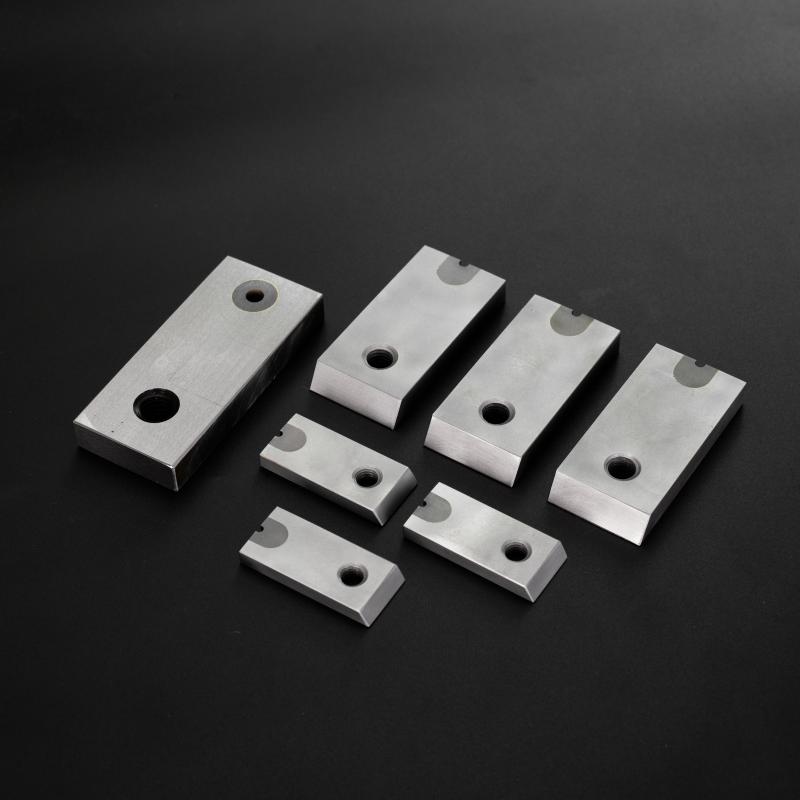Cut Off Blades are an essential tool in various industrial processes, serving as a versatile cutting solution for a wide range of materials. These blades are used in diverse sectors such as metalworking, construction, woodworking, and plastics, where they perform the critical function of cutting, trimming, and shaping materials with precision and efficiency.

1. Metalworking Industry: Precision Cutting for Metal Components
In the metalworking industry, Cut Off Blades are indispensable for cutting various types of metal materials, including steel, aluminum, and copper. These blades are used in applications such as:
Metal Sheet Cutting: Cut Off Blades are used for cutting thick metal sheets or plates into desired shapes and sizes for use in construction, automotive, and machinery.
Pipe and Tube Cutting: For cutting metal pipes and tubes, often used in construction and infrastructure, where precision and speed are critical.
Auto Parts Mould: Cut Off Blades are frequently employed in the production of Auto Parts Moulds, where precise cuts are needed to ensure the correct dimensions for molds used in manufacturing automotive components.
In metalworking, Cut Off Blades are often made from high-speed steel (HSS) or carbide materials to withstand the hardness of metals and provide clean, accurate cuts without excessive heat generation.
2. Construction Industry: Cutting Materials for Infrastructure Projects
The construction industry relies heavily on Cut Off Blades for cutting a variety of construction materials, including concrete, stone, and steel rebar. Some common applications include:
Cutting Concrete and Asphalt: For roadwork and large-scale construction projects, Cut Off Blades with diamond tips are used to precisely cut through concrete and asphalt. This ensures that workers can achieve straight, accurate cuts for expansions, renovations, or new constructions.
Cutting Rebar: Steel reinforcement bars (rebar) are often cut to specific lengths using heavy-duty Cut Off Blades, essential for reinforcing concrete in foundations, bridges, and buildings.
In construction, the durability and hardness of the Cut Off Blade are critical, as the materials being cut can be highly abrasive or tough.
3. Woodworking Industry: Shaping and Cutting Wood and Veneer
Woodworking is another key industry where Cut Off Blades play an important role. These blades are used to cut, trim, and shape various types of wood and veneer in applications such as:
Lumber Cutting: Cut Off Blades are commonly used in sawmills and woodworking shops to cut large logs into planks or beams for use in construction or furniture making.
Panel Cutting: For producing wood panels, Cut Off Blades are used to slice through sheets of wood or plywood, ensuring a smooth finish and precise cuts for further processing or assembly.
Woodworking requires specialized Cut Off Blades with carbide or tungsten coatings, which help the blades resist the wear and tear from the wood fibers, ensuring consistent performance throughout the cutting process.
4. Plastics Industry: Cutting Plastic Components for Various Applications
In the plastics industry, Cut Off Blades are used to cut plastic sheets, rods, and profiles, which are essential for creating parts used in manufacturing consumer goods, packaging, and industrial products. Key applications in plastics include:
Cutting Plastic Sheets and Films: Cut Off Blades are used to slice through plastic sheets or films, which can be used in everything from packaging materials to insulation panels.
Trimming Plastic Profiles: In industries that manufacture plastic profiles for windows, doors, and other components, Cut Off Blades provide precise trimming to ensure perfect dimensions and smooth edges.
Blades used in plastics cutting need to be sharp and durable enough to handle the material without causing deformation, ensuring a clean cut that preserves the integrity of the plastic.
5. Automotive Industry: Precision Cutting for Auto Parts Manufacturing
In the automotive sector, where precision and efficiency are crucial, Cut Off Blades are used to cut and shape metal, plastic, and composite materials for various auto parts. Some common uses include:
Cutting Metal Auto Components: Cut Off Blades are used to trim metal parts such as chassis components, engine parts, and brackets to the required sizes.
Cutting Plastic and Rubber Parts: For cutting molded plastic or rubber components used in automotive assemblies, Cut Off Blades are necessary for achieving the desired size and smooth edge.
Auto Parts Mould: As mentioned earlier, Cut Off Blades are also employed in the production of Auto Parts Mould, where precision cutting is required to create molds for automotive components, ensuring a perfect fit and finish for mass production.
The use of specialized materials like Tungsten Carbide or diamond-coated blades is common in automotive applications to meet the demanding requirements for high precision and durability.
6. Food Processing Industry: Safe and Efficient Cutting of Food Products
In food processing, Cut Off Blades are utilized to slice and trim a variety of food products, from fruits and vegetables to meats and cheeses. These blades help maintain the integrity and cleanliness of the food, while ensuring the cuts are uniform and precise.
Meat and Fish Cutting: Cut Off Blades are used in industrial meat processing facilities to cut and portion meat and fish into predetermined sizes for packaging and sale.
Vegetable and Fruit Processing: For cutting fruits and vegetables into uniform slices or strips, Cut Off Blades are essential to maintain consistency in product size.
Food-grade blades used in this industry are made of materials that are safe for food contact and resistant to corrosion from acids, salts, and oils.
Cut Off Blades are essential tools across a wide range of industries, providing efficient, precise, and reliable cutting solutions for materials such as metal, wood, plastic, and food products. From cutting Auto Parts Moulds in the automotive industry to trimming rebar in construction, these blades ensure that materials are processed with the required accuracy and quality. The versatility and efficiency of Cut Off Blades make them indispensable in modern manufacturing, construction, and many other sectors, helping industries achieve the precision and performance they require in their operations.











